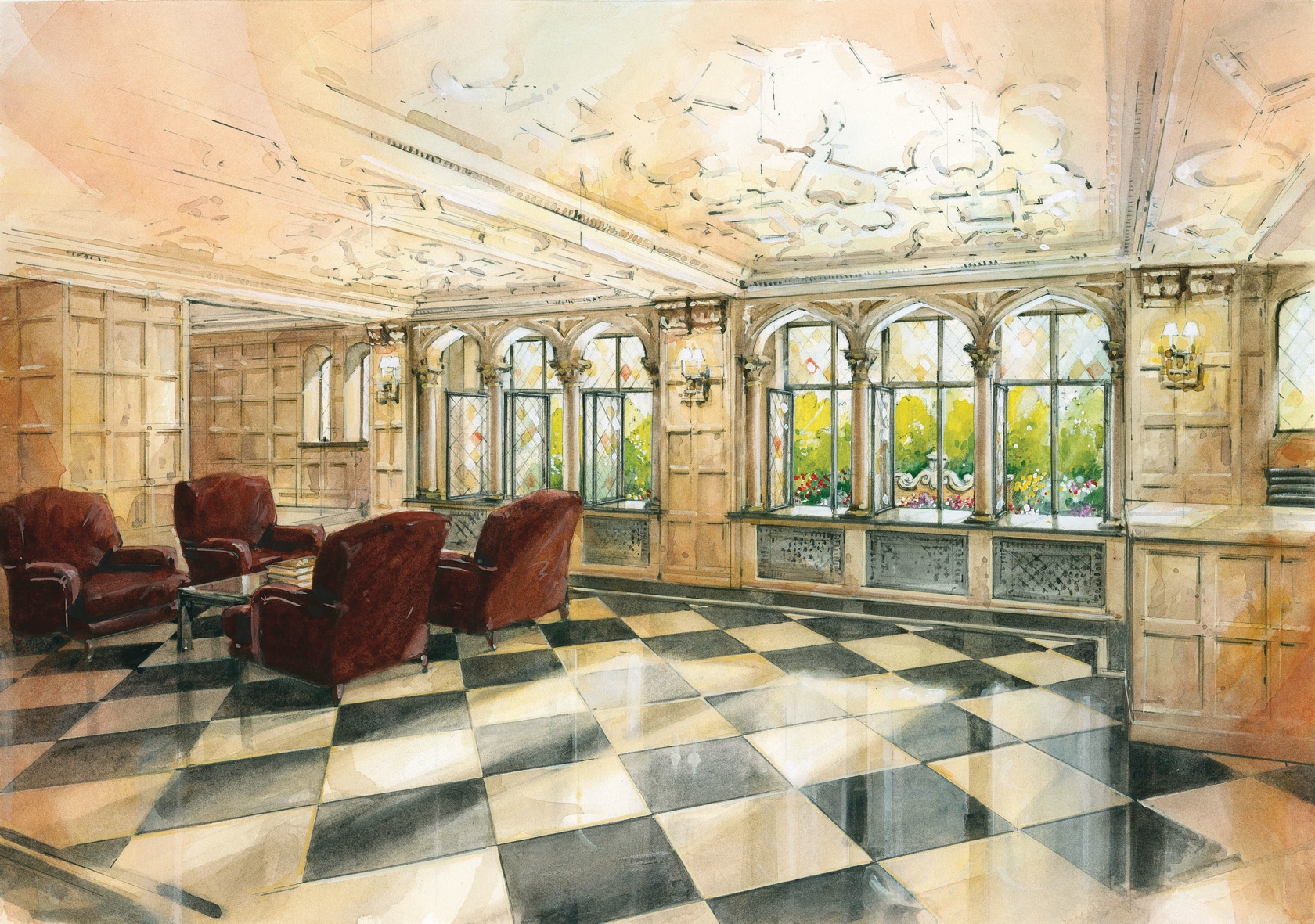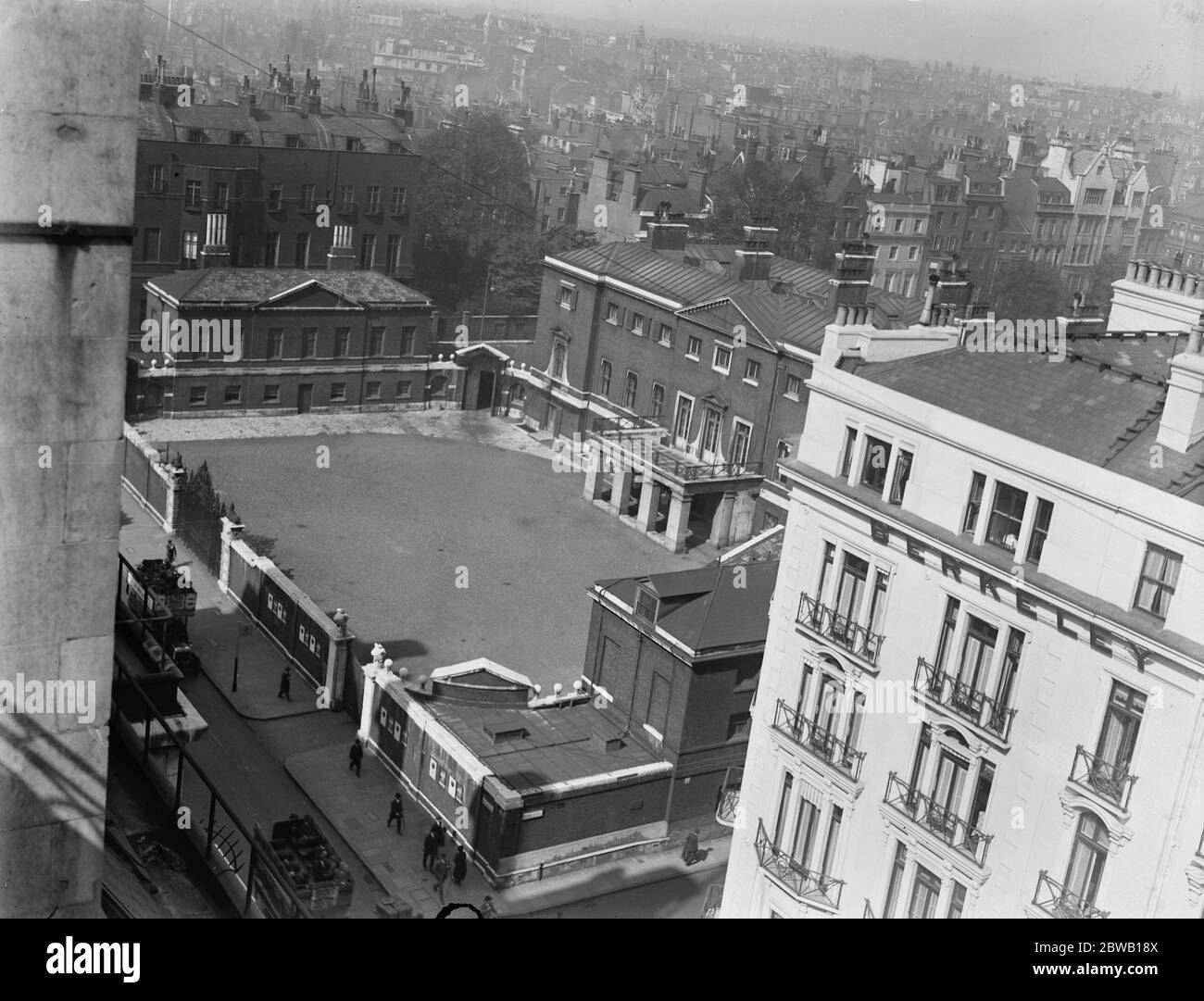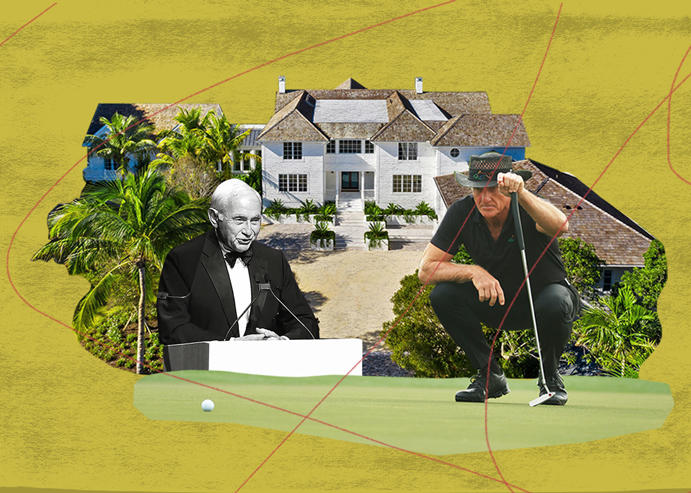Table Of Content

The house was purchased by the Londonderry’s in 1819 as a London residence for the family, who spent considerable time on their estate in Ireland. It was completely rebuilt and enlarged by the 3rd duke during the early 1850s, and at his death in 1854, the mansion rivaled Dorchester House and Stafford House for elegance. By the time of the 6th Marquess’s ascension to the title in the 1880s, the Londonderry’s had become staunch Unionists.
William Cavendish, 3rd Earl of Devonshire (1617–
Not only had the winds of politics changed (the Labour Party began to dominate the British landscape), but these houses were unwieldy and expensive to maintain. Those that hadn’t already been opened to the public either followed suit or were shut up or, as in most cases, sold and demolished. By the late nineteenth century, the private palaces of London clustered together along Piccadilly and Park Lane. However, a few mansions of note sat above Oxford Street, such as Portman House in Portman Square, Hertford (formerly Manchester) House in Manchester Square, and in other places in the West End–Montague House in Whitehall, and Stafford House in the heart of St. James’s. And lest we forget, the Prince of Wales’s London residence, Marlborough House, sat in Pall Mall.
Historic Mazes to Explore in England
Here Americans rang in the Fourth of July, and it was from Dorchester House where Alice Roosevelt Longworth prepared to make her court presentation to the King and Queen. After Reid died in 1912, the house was abandoned by the American diplomatic service as his successor, Walter Hines Page, was a man of much simpler tastes and fortune. The house was undergoing refurbishment at the time, and (surprise, surprise) the finger of blame was pointed squarely at careless labourers.
Devonshire Heights house fire CTV News - CTV News Windsor
Devonshire Heights house fire CTV News.
Posted: Thu, 14 Sep 2023 07:00:00 GMT [source]
London’s Oldest Street Signs
Completed circa 1740, it stood empty after the First World War and was demolished in 1924. When in Kingston, make time for a stop at Devon House, a grand 1891 Georgian mansion that was built for George Stiebel, Jamaica‘s first non-white millionaire. The lovely upright house and its 11 surrounding acres are now protected as a National Heritage Site, but that doesn’t mean that there’s not fun to be had. The sprawling grounds include shops, restaurants, a bakery, and a popular ice-cream shop, I-Scream.
Evelyn Cavendish (née Petty-Fitzmaurice), Duchess of Devonshire (1870–
In honour of Queen Victoria’s Diamond Jubilee in 1897, they decided to replicate the event. While multiple balls were held every night during the London season, this was the ball. Old Devonshire House at 48 Boswell Street, was located between Theobald's Road in Bloomsbury, and Queen Square, London.

He soon enough married Lady Elizabeth Foster, who became Duchess of Devonshire as his second wife. Built in a Palladian style, Devonshire House became one of the most famous houses in London. But to understand its importance, one has to know a little bit about the characters that lived there.
Blanche Georgiana Howard, Countess of Burlington (1812–
Major George Henry Benton Fletcher bought Old Devonshire House in 1932,[2][3] to display his keyboard collection.[4] He donated the house and his collection to the National Trust in November 1937. The house was destroyed in May 1941 by a Luftwaffe bombing raid on Holborn during the Blitz. Most of his keyboard instruments had been evacuated to Gloucestershire before the raid. One more piece was published in the last years of Georgiana's life, The Passage of the Mountain of Saint Gothard, first in an unauthorised version in the 'Morning Chronicle' and 'Morning Post' of 20 and 21 December 1799, then in a privately printed edition in 1800.
William Cavendish, 1st Earl of Devonshire (1551–
Alec Baldwin Shares Sweet Shots of His Kids and the Inside of His Greenwich Village Home - Architectural Digest
Alec Baldwin Shares Sweet Shots of His Kids and the Inside of His Greenwich Village Home.
Posted: Mon, 25 Sep 2017 07:00:00 GMT [source]
The Devonshire House Ball or the Devonshire House Fancy Dress Ball was an elaborate fancy dress ball, hosted by the Duke and Duchess of Devonshire, held on 2 July 1897 at Devonshire House in Piccadilly to celebrate the Diamond Jubilee of Queen Victoria. Due to the many prominent royals, aristocrats, and society figures who attended as well as the overall lavishness of the ball, it was considered the event of the 1897 London Season. A South End landlord is seeking to convert a six-story office building into 91 apartments — but only if city officials will allow the owner to add height to accommodate the renovations.
The Marchioness in particular opposed Home Rule for Ireland and quickly gained prominence as a Conservative Party leader, going on to form the Ulster Women‘s Unionist Council in 1911. However influential and powerful Theresa Londonderry was, her political clout has been overshadowed by the extraordinary rift between she and her husband after his discovery of her affair with another man, and the possibility that his youngest son was not his own. Londonderry House remained in the family’s possession until 1965, when it was sold to the neighboring Hilton, and demolished to enable the hotelier room for expansion. Devonshire House in Piccadilly was the London residence of the Dukes of Devonshire in the 18th and 19th centuries.
At the roof line, a tiled roof like projection runs below the crenelated parapet. Near the corner of the building at the roof is the very visible water tower surround, which also has a crenelated parapet and a quatrefoil-shaped opening at each visible face. One the most unique features of this remarkable building lies at top of the entablature. There incised is the Latin term, “cavendo tutus,” which translates roughly as “safety by taking care” — prescient words. There have been 16 generations of the Devonshire family, spanning more than 500 years. Apartments now feature topnotch features and finishes, including custom-designed moldings and oak flooring.
Please call or email us to arrange a time if you wish to meet with someone at the office. You can also join us in urging the city to protect the vital history and beauty of this neighborhood, which is endangered because, unique among Greenwich Village and the East Village, it is lacking in both landmark and zoning protections. Click here to send a letter to city officials supporting landmark protections for the area now.
It was not until 1686 that the 1st Duke of Devonshire began a major re-building programme at the house, constructing most of what survives today. While the 2nd and 3rd Dukes largely left the architecture of the house alone, they amassed its huge collection of notable artwork, from Ancient Greek and Roman sculpture to Old Master drawings. The first house to be built on the Chatsworth House site was constructed in 1549 by Bess of Hardwick and her husband Sir William Cavendish.
Made in the early 18th century, they were commissioned for Heathfield House in Turnham Green (on the site of Chiswick Fire Station today). The house was demolished in 1837 and the Duke of Devonshire bought the gates for Chiswick House, later moving them to his London pad in 1897. In the Edwardian era, the most fashionable mansions, which frequently were the sites of the most exclusive social affairs and the most influential of political events, were Devonshire House, Dorchester House, Stafford House, and Londonderry House. All the guests, including the Prince and Princess of Wales, dressed as historical portraits. Many photos of the event became well-known fixtures in the late Victorian era history books. The 5th Duke, William Cavendish, was a Whig supporter of Charles James Fox and became the setting for the remarkable social and political life of Cavendish’s circle of noble and political friends.
Despite her advanced state of pregnancy, Consuelo Marlborough recalled being laced tightly to fit into her costume, and finding her pleasure dimmed when walking across Green Park at dawn to see a number of homeless, wretched men sleeping in the grass. After the 8th duke’s death in 1908, Devonshire House passed to his nephew, who like aristocrats in the interwar era, abandoned his expensive, unnecessary London mansion and consigned it for demolition. Unlike her mother, Georgiana had not been out in society for several seasons, nor had she accepted the Duke because she loved and preferred him to all others. She was sadly mistaken; from the beginning of the marriage, the Duke could not meet Georgiana's emotional needs, and she quickly learned her role was solely to produce an heir and fulfill her social obligations.

No comments:
Post a Comment